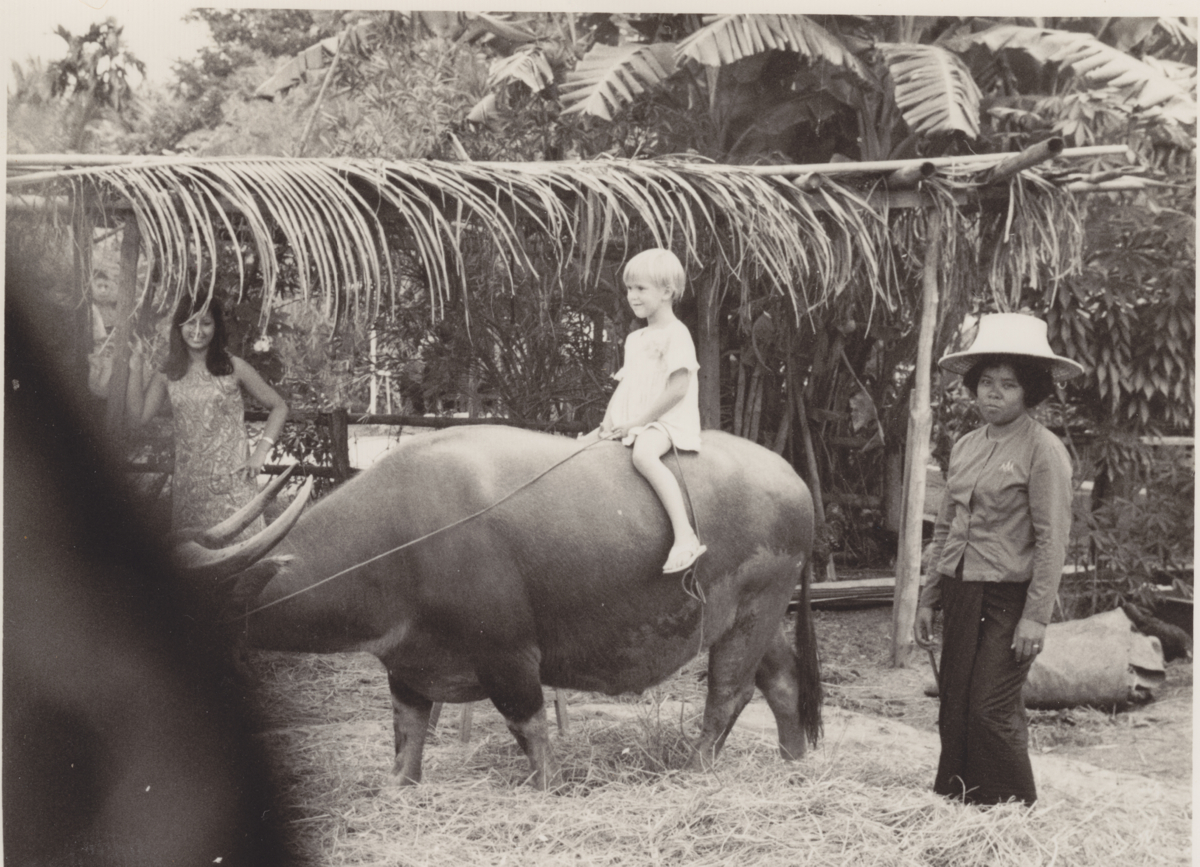Born in the American South
I was born – as we all are – into a world of assumptions about race, nationality, and privilege. My particular life experience was unusual, for a white American.
I was born in New Orleans in 1962, when the Civil Rights movement was still a long way from achieving its goals. My parents were activists, participating in lunch counter sit-ins. While I was still small, we moved to Beaumont, Texas, where my dad (then teaching at Lamar University) was the campaign manager for the first black man to run for mayor of Beaumont. He didn’t win. (In east Texas circa 1964? Are you kidding?) I’m told we had a cross burned on our lawn over that, but I don’t remember the incident, if I even saw it.
In either New Orleans or Beaumont, I had a black nanny, Leona. Dad, a keen photographer, took an adorable black-and-white photo of me and Leona’s daughter (both toddlers) in a bathtub together. He intended the photo as a statement about racial equality (which was all I saw in it, as a child) but… Leona was being paid to tend me while (I suspect, though I do not remember) her daughter was usually elsewhere, being looked after by someone else – a nuance I did not see at that age and undoubtedly took for granted. My own mother, meanwhile, was working as a secretary. I loved Leona, missed her when we moved away, and remembered her fondly for years afterward. But when we met again when I was 9 or so (my dad took me to visit her), it was uncomfortable – I didn’t remember much except that I once had loved her.
Growing Up as an Expat in Bangkok
In 1967, my mother and I moved to Thailand to live as an expat trailing family while my dad was posted to Vietnam by USAID.
Expatriate life was, in some ways, luxurious. Families were moved – lock, stock, possessions, and pets – to apartments and houses already rented and furnished for them by their employer (in our case, the US government), in protected enclaves with other foreigners. Kids usually attended international schools with other expat kids, and few or no locals.
The lifestyle of most expatriates required servants, for reasons I have previously discussed. In those days, the middle and upper classes of developing countries had servants as well, for many of the same reasons. Homes had “servants’ quarters,” which were clearly differentiated from the parts of the house occupied by the employers.
In Bangkok, we first lived in at Red Rose Court, an apartment complex. It was made up of rows of townhouses, where the ground floor contained a carport and the servants’ quarters: one or two small bedrooms with polished concrete floors, a cooking area, and a traditional Thai bathroom with a “klong jar” – a huge ceramic jar from which the maids bathed by pouring cold water over themselves with a metal dipper bowl. There was no air conditioning downstairs, and perhaps no hot water.
Upstairs, we had teak floors and teak furniture in what is now called “mid-century” style, window A/C units in all the rooms, flow-through water heaters for our showers, and burglar bars on all the windows and balcony doors.
When my dad was posted to Bangkok to join us after two years in Vietnam, the family moved one street over to a large house. Here, the servants’ quarters were a smaller house, separated by a covered carport from the main house. Our two maids and maybe a gardener lived there. I did not intrude upon them, except occasionally to watch the TV that we had given them after we used it to watch the moon landing.
So I grew up in an environment where “first world” people (usually white) historically had been and still were literally above or separate from the (darker) “third world” people we were supposedly there to help. My parents and the liberal, not to say hippie, crowd they ran with did not believe themselves to be racially superior. They taught me that, as members of a historically privileged nationality / race, we were morally obligated to help those less well off than ourselves. There was no religious component to any of this: the adults I knew all worked for non-religious organizations. They were respectful of and often deeply interested in local beliefs and culture. (At various times, each of my parents considered themselves Buddhist.)
My dad worked in international development because he believed that “If you’re not part of the solution, you’re part of the problem.” Yes, I can now recognize that international development had many contradictions and was based on some false assumptions – in many ways, it was a new version of the “white man’s burden.” But that is a separate discussion.
Whatever our intentions and reasons, being white people in developing countries made us stand out in ways that were often uncomfortable, and sometimes dangerous. In Thailand, where I was one of the few blondes anyone had ever seen in the 1960s, Thai kids would shout at me “falang falang falang” (foreigner). It could have been an expression of curiosity and interest, or even attempted friendship, but as a small child I found it alienating and frightening. I did not have much contact with Thai people aside from our maid Wandee (whom I loved). I was interested in Thai culture and myth, but afraid of actual people (I was a shy, timid child, and did not like the extra attention my strangeness got me).
Foreigners were constant targets for housebreaking, pick-pocketing, and more mundane price ripoffs in shops and markets, because we were easily identified, and known to be more wealthy than most locals. It was easy to develop a defensive shell of assumptions that all the “natives” were out to get us, one way or another. Yes, the people we were there to help. A paradox, indeed.
I did third and fourth grade at the International School Bangkok, which in those years was mostly an American school. Many of the students were there because their fathers had something to do with the Vietnam war – some actually fighting, others in administration, intelligence, etc.
My schoolmates were predominantly white but there were some black kids, and I had at least two (American) black teachers. There may have been racial tensions among the older students (who were on a separate campus from the elementary school, so I never saw them). I remember that my yearbook from 1971 featured a full-page photo of a black teen boy and a white teen boy engaged in a vicious fight, but I don’t remember what explanation, if any, was given. The older kids who made the yearbook knew what it was about.
The same yearbook had an “In Memoriam” page with the names of 10 or 12 students who, my father told me, had all died of drug overdoses. The school may have been a microcosm of what was going on with the parents in Vietnam.
photo at top: me at TIMland (Thailand in Miniature), one of the favorite places of my childhood
next (to be written): Inner-City Pittsburgh




